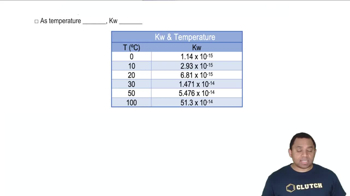Here are the essential concepts you must grasp in order to answer the question correctly.
Gibbs Free Energy (ΔG)
Gibbs Free Energy (ΔG) is a thermodynamic potential that helps predict the spontaneity of a reaction at constant temperature and pressure. A negative ΔG indicates that a reaction is spontaneous, while a positive ΔG suggests non-spontaneity. The standard Gibbs free energy change (ΔG°) is calculated using standard enthalpy and entropy values, providing insight into the favorability of a reaction under standard conditions.
Recommended video:
Gibbs Free Energy of Reactions
Equilibrium Constant (Kp)
The equilibrium constant (Kp) is a dimensionless value that expresses the ratio of the concentrations of products to reactants at equilibrium for a given reaction at a specific temperature. For the reaction N2(g) + O2(g) → 2 NO(g), Kp can be calculated using the partial pressures of the gases involved. A larger Kp value indicates a greater tendency for the reaction to favor product formation at equilibrium.
Recommended video:
Equilibrium Constant Expressions
Temperature Dependence of Spontaneity
The spontaneity of a reaction can be temperature-dependent, as described by the Gibbs free energy equation: ΔG = ΔH - TΔS. Here, ΔH is the change in enthalpy, ΔS is the change in entropy, and T is the temperature in Kelvin. As temperature increases, the TΔS term can become significant, potentially making a reaction more spontaneous if ΔS is positive, indicating an increase in disorder.
Recommended video:
Kw Temperature Dependence
 Verified step by step guidance
Verified step by step guidance

